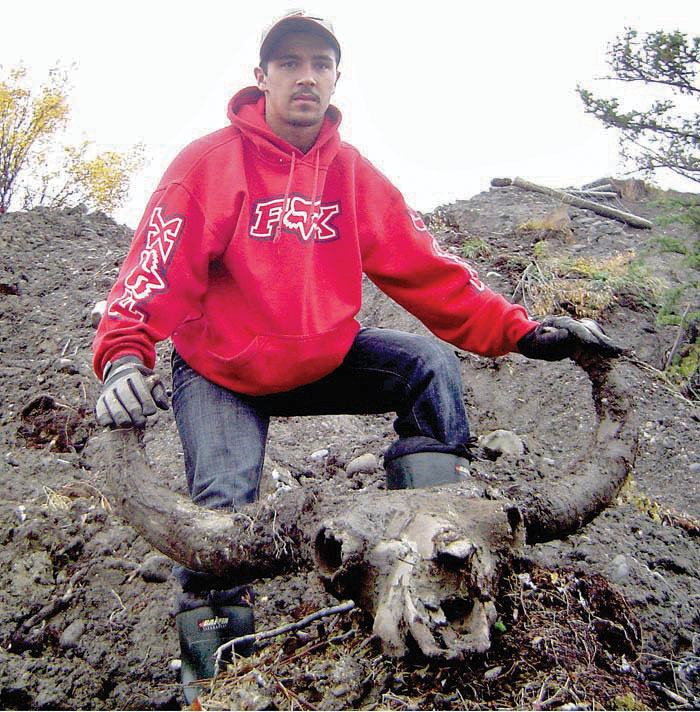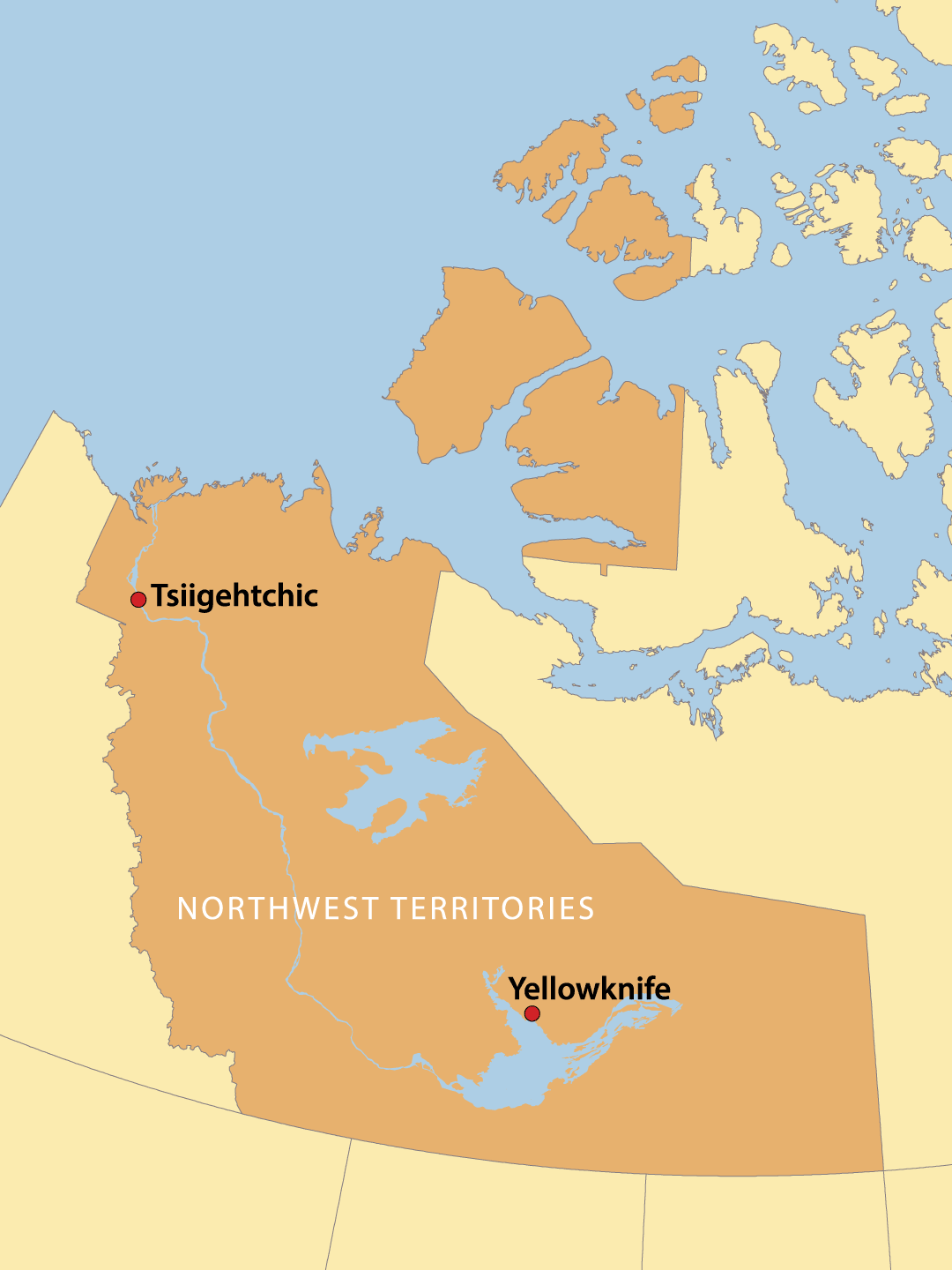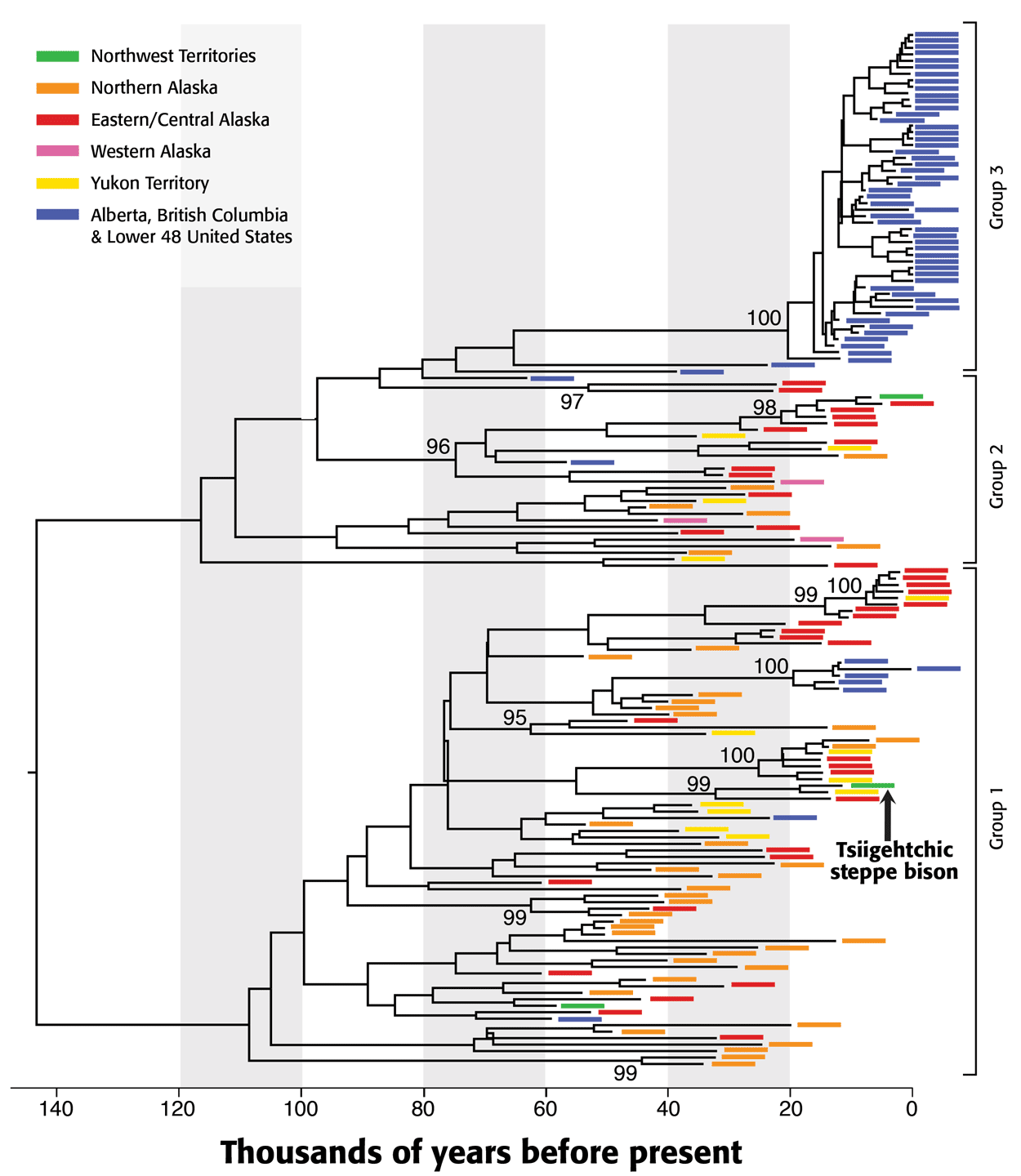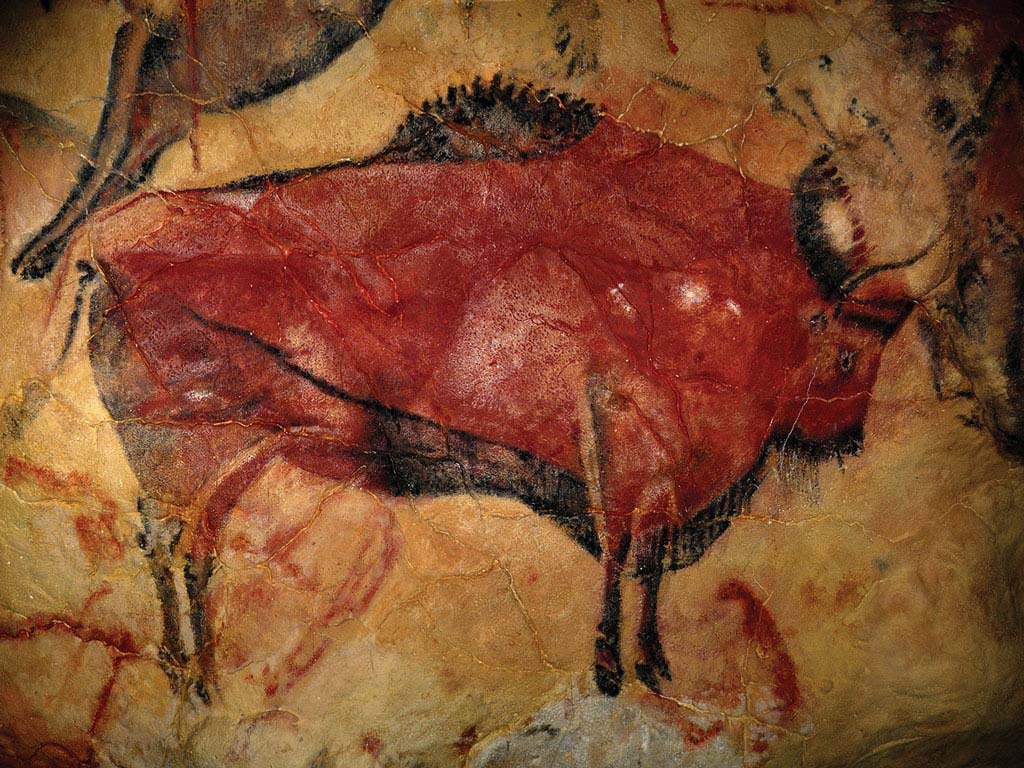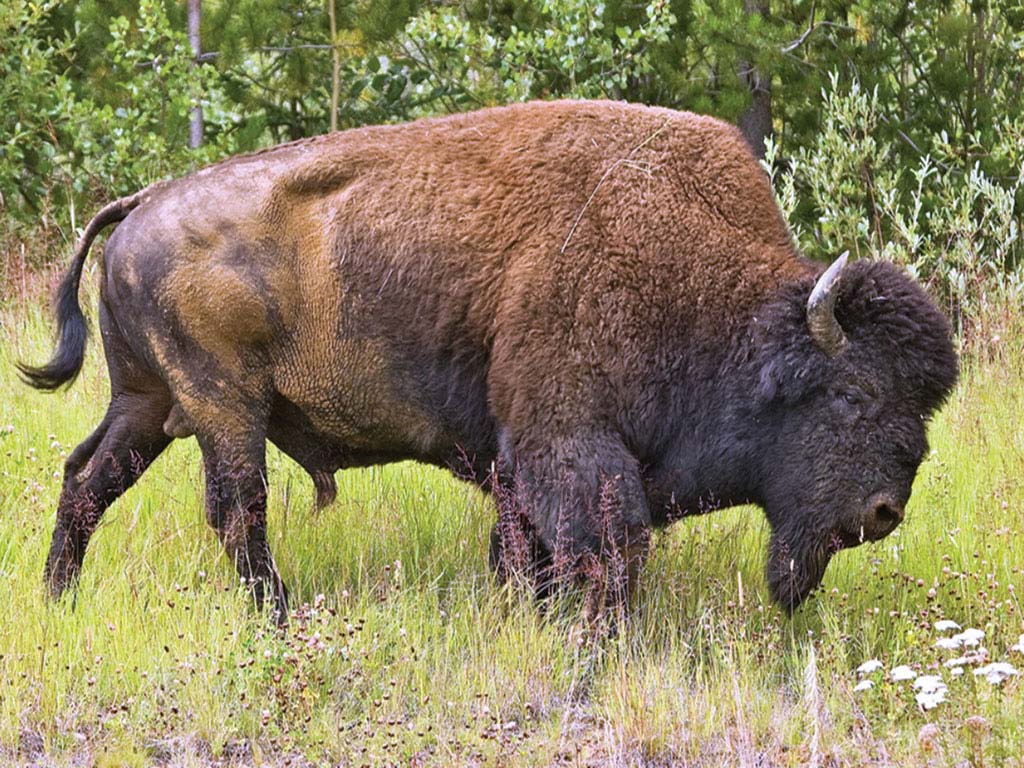Steppe bison discovered in the NWT!
In July 2007, Shane Van Loon was walking along the riverbank in his home town of Tsiigehtchic, Northwest Territories when he spotted some bones sticking out of the cliff …
The animal’s frozen remains were exposed by a thaw slump just below the community cemetery. As the ground continued to thaw over the summer, Shane collected parts of the animal, piece by piece. He placed the parts that still had soft tissue attached to bones in his mother’s freezer to preserve them.
Yellowknife archaeologist Glen MacKay and palaeontologist Grant Zazula from Whitehorse were called to the scene and identified the frozen remains as a long-extinct steppe bison.
“I didn’t believe it at first,” says Zazula. “We’ve found thousands of steppe bison bones in the Yukon, but this is the first mummified ice age remains to be discovered in the NWT.”
The remains were later shipped to the Prince of Wales Northern Heritage Centre in Yellowknife, where they are currently being preserved.
Carbon dating showed the animal to be 13,650 years old. The hide was sent for conservation treatment at the Canadian Conservation Institute in Ottawa. A bone sample was sent to scientists at Pennsylvania State University for genetic analysis.
Steppe bison highlights:
| Species: | Bison priscus (meaning ‘antique’ or ‘venerable’ bison) |
| Common name: | Steppe bison |
| Found at: | Tsiigehtchic, Northwest Territories (population 128) |
| When: | July 2007 |
| Found by: | Shane Van Loon |
| Calendar age: | 13,650 years |
| Genetic profile: | From the Eurasian population (now extinct) |
| Size: | Similar to a modern wood bison, with a larger hump and horns |
What can we learn from studying the NWT steppe bison?
The exceptionally well-preserved bones and soft tissues of the steppe bison fossil hold a wealth of information about this extinct species and the environment it lived in. Scientists are able to learn how long ago an animal died by analyzing their bones through a technique called radiocarbon dating.
Ancient bones and hair found in the permafrost also often contain DNA – the biological building blocks of life. Sequences of DNA from every species are unique and contain coded information about an animal’s history.
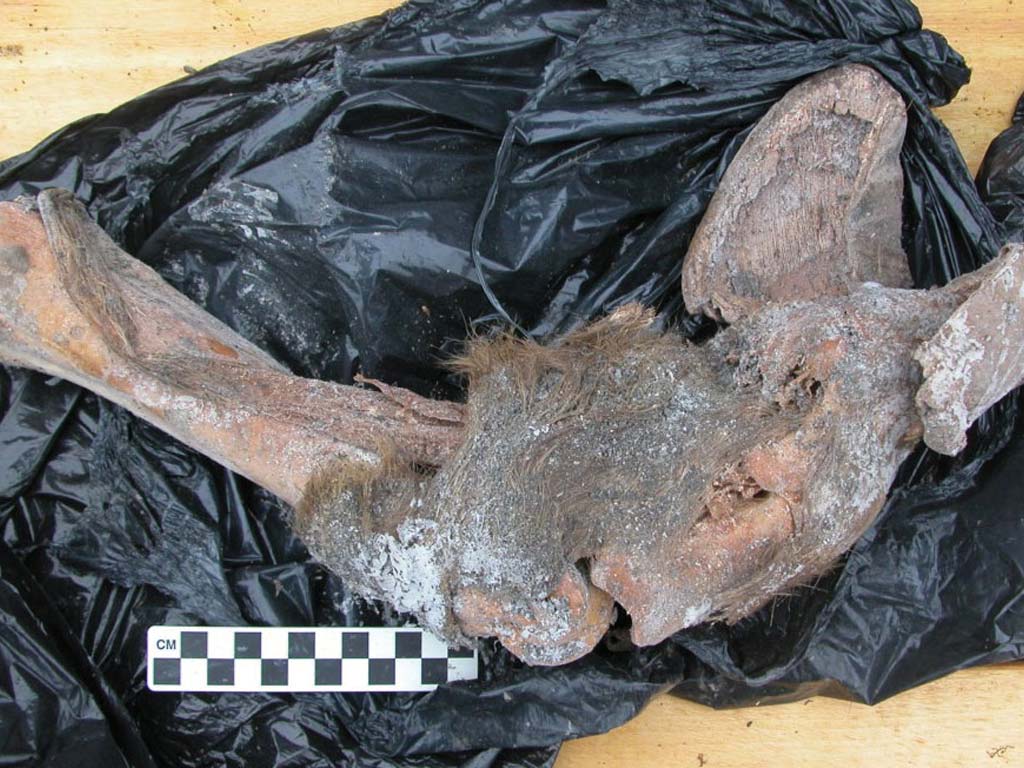
Back leg joint (right metatarsal and articulated hoof assembly)
Steppe bison: how did it get here?

13,000 years ago
About 13,000 years ago, the climate warmed and the ice sheets started to melt. Many animals such as the Eurasian steppe bison that were adapted to colder conditions could not adjust and soon went extinct. Those that lived in North America survived and eventually evolved into modern bison who eventually expanded their range throughout western North America.
Horn core
AArchaeologists from the Prince of Wales Northern Heritage Centre brought the frozen bison remains to the local Stanton Territorial Hospital where staff were very helpful by x-raying various sections. In this way, they were able to see into the remains while keeping them frozen. The archaeologists were looking for spear points or other signs of cause of death, but evidence of hunting was not found.
You can see in the x-ray to the right that the massive horns of the steppe bison consist of a horn core surrounded by thin sheaths of keratin, the same protein that our finger nails are made of. Like the growth rings of a tree, bison add a layer of sheath to their horns every year.
The steppe bison and local wood bison (Bison bison athabascae) were very close in size. Today, wood bison are the largest wild herbivores in North America. A mature bull usually weighs 800 to 900 kg and the largest ones can exceed 1000 kg. While a large wood bison bull can be up to two metres in shoulder height, steppe bison bulls were even bigger.
Where they really differed was in the size of their horns. The spread of the horns of the Tsiigehtchic steppe bison exceeded one metre, while that of an adult male wood bison is about half of this. Bison antiquus, a descendant of the steppe bison, had smaller horns though not as small as a modern bison.

In Paleolithic cave paintings, steppe bison appear as though they had two humps. Their large muscular neck hump was positioned further along their back, separated from their dark mane. This hump placement gave them the necessary muscular leverage to carry the larger horns. It also allowed them to carry their heads higher, an adaptation that helped them see approaching Pleistocene American lions in their grassy environment.

